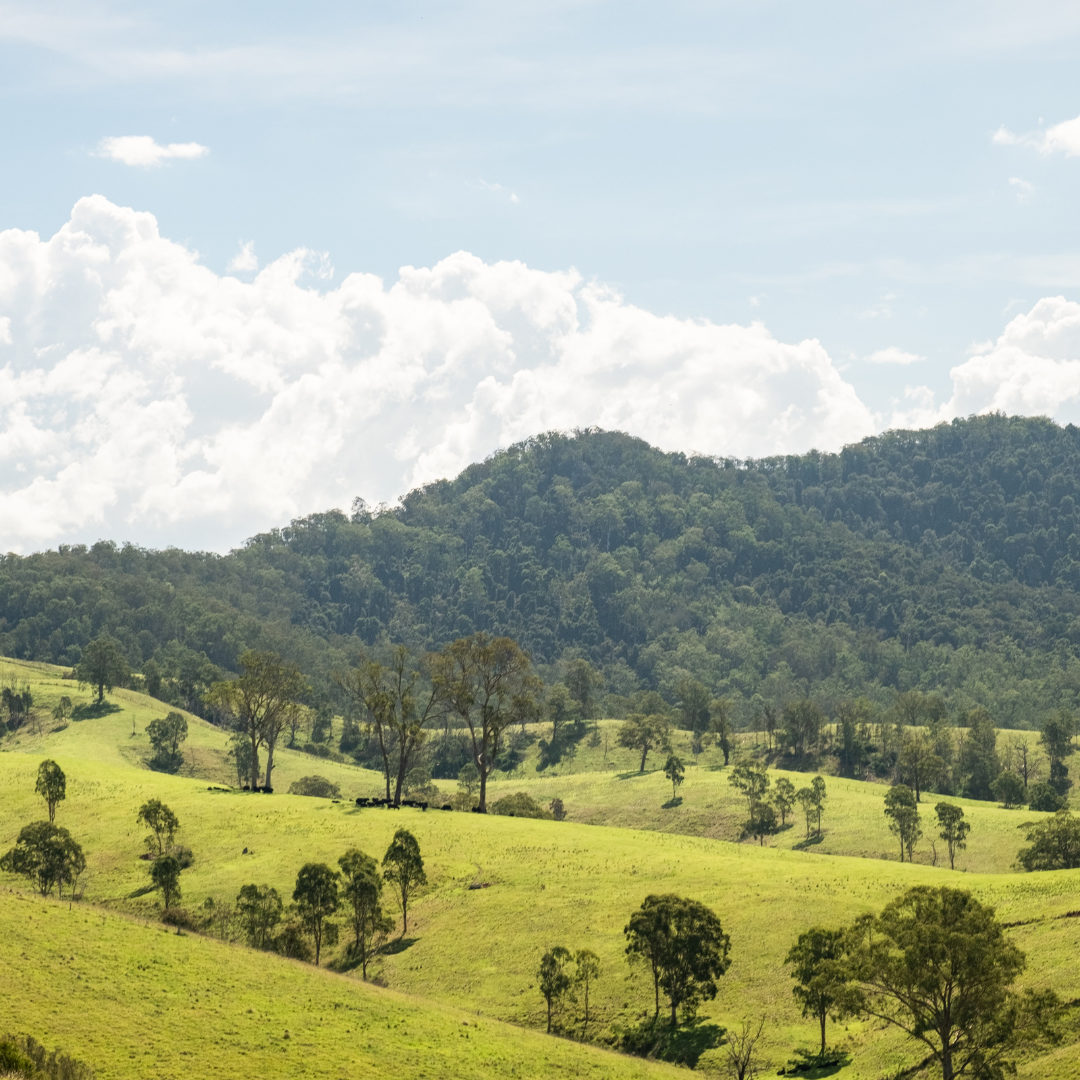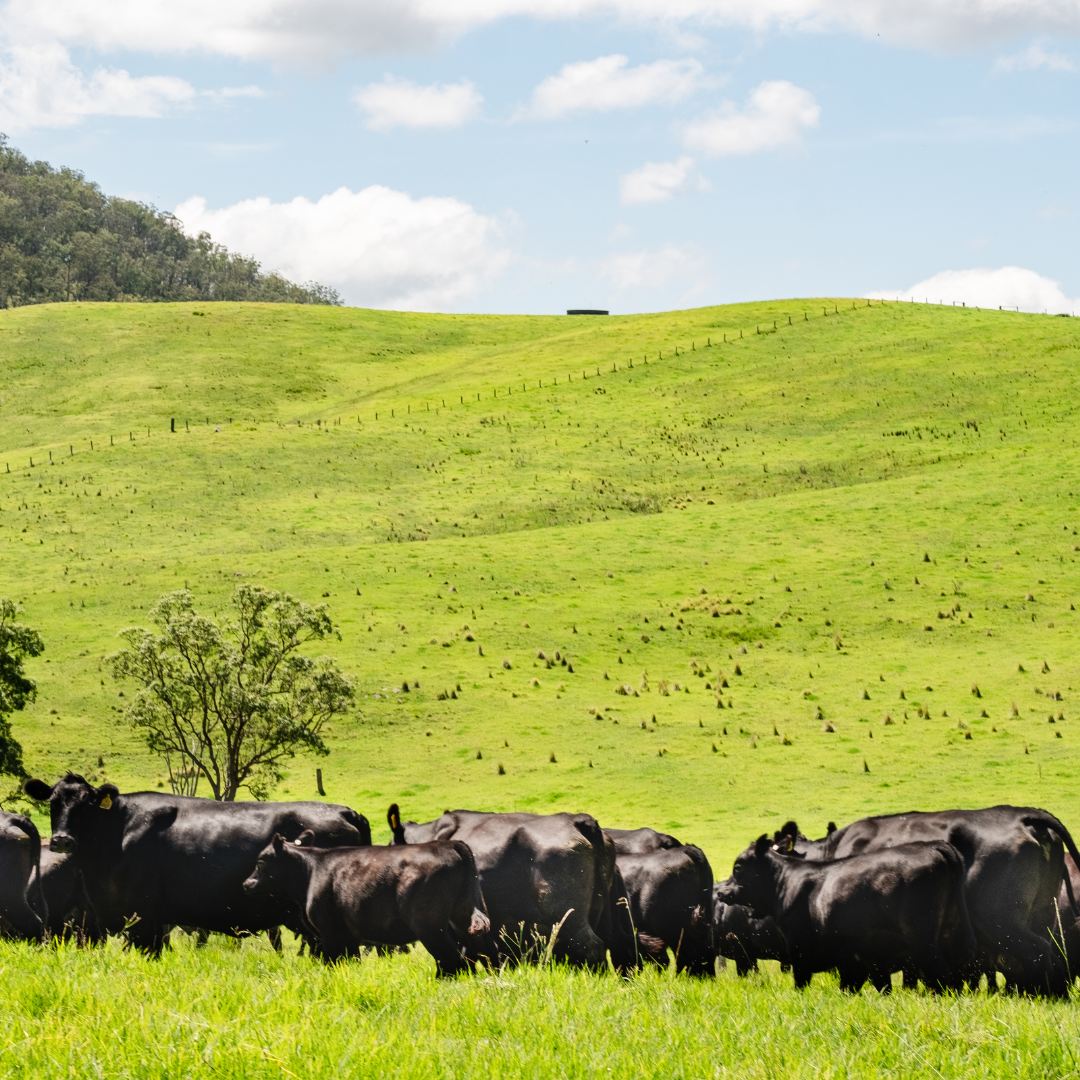Improved pasture through precision mapping has led Macka's Pastoral to carbon neutral status
May 2023
“A diversity of leaf and root architecture are important for building soil biology while multi-species plants provide a variety of diet close by. Cows burn energy chasing plant species.” - Hayden Hollis, Director of Agricore
Pictured Left: Robert Mackenzie, Director of Macka’s Black Angus, Pictured Right: Hayden Hollis, Director of Agricore
A decision to become carbon neutral from paddock to the front gate is an investment in the future of farming at Woko Station via Gloucester.
The Mackenzie family of Salt Ash is behind the lift in agronomic thinking that has already proven an ability to boost beef productivity while maintaining herd health.
To kick-start the shift in sustainable management the first part has been to improve vast areas of pasture across 3500 acres, mostly summer-dominant kikuyu, on Woko and other holdings owned by Macka's Pastoral in the Gloucester district.
The results are brand new and just emerging but already the data shows an average annual increase per hectare of half an ACCU worth of atmospheric carbon equivalent - 540kg/ha - stored in a variety of soil types and not all of them improved. It is a significant lift bringing soil capacity to 2.83t/ha across all the pastoral properties and would allow the Angus beef enterprise to tick a "carbon neutral box" - if there was one.
At the moment Meat and Livestock Australia's ambition to be carbon neutral in the red meat supply chain by 2030 stops at the farm gate.
So Macka's is ahead of the curve, but admits that in its vertically integrated business they have yet to reach carbon neutrality from gate to plate. That is coming, however, says managing director Robert Mackenzie.
Agronomist Hayden Hollis, director of Agricore at Tamworth, says the process has to be affordable if agricultural carbon neutrality is to be adopted at scale. This was the case at Woko Station, although no approach was spared in order for the project to be seen as an example - even the weather is being documented with each station split into four regions.
Pictured Left: Macka’s Pastoral Manager, Pictured Right: Hayden Hollis, Director of Agricore
The soil management and pasture improvement process began with Fieldcore, a standardised soil - mapping solution outlining the variability from light sand to medium loam and heavy clay soil zones. Specialised ground and aerial based equipment collected data on texture - identifying sand, versus silt or clay. Laser detection, or Lidar, mapped contours.
"Through this we are getting farmers to think about their landscapes and application decisions in a new way," says Mr Hollis.
Data on a thumb-drive was fed into the computer of a variable-rate spreader to deliver specific amounts of nutrient and lime. On steep slopes aircraft dropped the same prescription of inputs.
Just 3pc of the nutrient application across the Mackas operation was made up of single super and potash. The vast majority was composted poultry manure, spread at that variable rate, to provide a suite of micro and macro nutrients released into the soil micro-biology over time.
"Not only does this give a better outcome for plants," says Mr Hollis, "but it prevents wasteful emissions of greenhouse gases."
Plants do the heavy lifting when it comes to creating a carbon neutral farm and this has been proven on properties under Macka's Pastoral control.
With inputs matching soil requirements, the next phase of the project at Woko Station has been to plant diverse species to maintain consistent feed quality all year 'round.
In a typical kikuyu pasture winter feed looks like old cardboard, yet spring growth can be so dominant in the tropical grass that its effect can be toxic to cattle.
By direct drilling a diversity of winter feed - cocksfoot varieties trialled and tested for the Gloucester district, Italian rye grass, prairie grass, nitrogen-fixing clovers plus deep-rooted chicory - the pasture make-up has changed. Cows don't have to travel far to eat something different. This beef enterprise is starting to look more like a dairy.
The improvement program has allowed for this new pasture to set seed every two to three years with possible renovation after 5-7 years, enhancing the veld with targeted species.
Mr Hollis says a diversity of leaf and root architecture are important for building soil biology while multi-species plants provide a variety of diet close by.
"Cows burn energy chasing plant species," points out Mr Hollis.
More than good grazing, the system employed at Macka's Pastoral is Emissions Reduction Fund friendly, with data that is easy to read and meets trading requirements.
Article written by Jamie Brown for The Land









